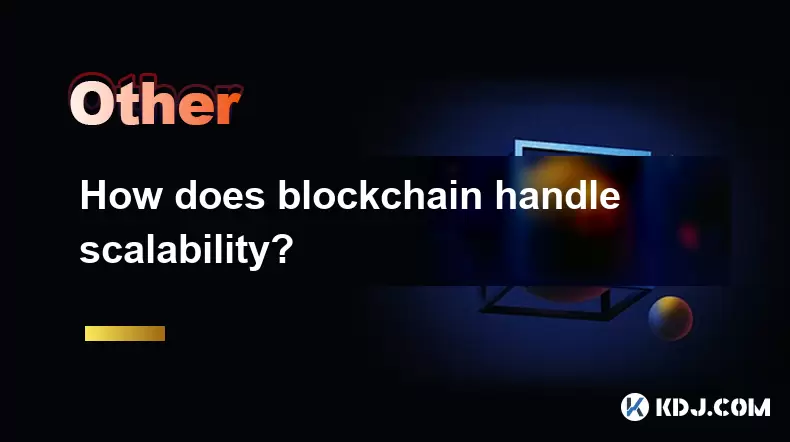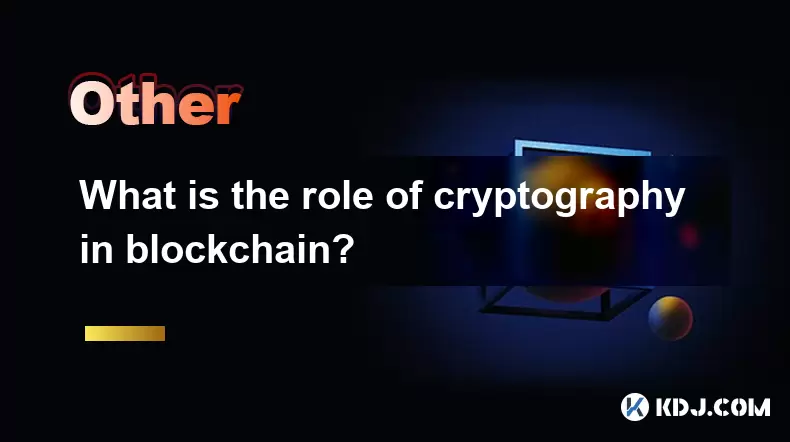-
 Bitcoin
Bitcoin $113800
0.32% -
 Ethereum
Ethereum $3477
-0.14% -
 XRP
XRP $2.873
-2.20% -
 Tether USDt
Tether USDt $0.9999
0.02% -
 BNB
BNB $749.3
-0.40% -
 Solana
Solana $161.7
-0.55% -
 USDC
USDC $0.9998
0.00% -
 TRON
TRON $0.3268
0.28% -
 Dogecoin
Dogecoin $0.1976
-0.03% -
 Cardano
Cardano $0.7250
2.27% -
 Hyperliquid
Hyperliquid $39.18
2.73% -
 Sui
Sui $3.457
1.70% -
 Stellar
Stellar $0.3832
1.16% -
 Chainlink
Chainlink $16.11
1.49% -
 Bitcoin Cash
Bitcoin Cash $539.7
1.25% -
 Hedera
Hedera $0.2410
2.21% -
 Ethena USDe
Ethena USDe $1.001
0.04% -
 Avalanche
Avalanche $21.35
0.21% -
 Toncoin
Toncoin $3.716
3.86% -
 Litecoin
Litecoin $109.3
2.88% -
 UNUS SED LEO
UNUS SED LEO $8.965
0.04% -
 Shiba Inu
Shiba Inu $0.00001214
1.02% -
 Polkadot
Polkadot $3.589
1.85% -
 Uniswap
Uniswap $9.083
1.24% -
 Monero
Monero $299.3
0.98% -
 Dai
Dai $1.000
0.02% -
 Bitget Token
Bitget Token $4.301
0.43% -
 Pepe
Pepe $0.00001045
1.32% -
 Cronos
Cronos $0.1314
0.51% -
 Aave
Aave $257.6
2.04%
How do blockchain games achieve liquidity of in-game assets?
Blockchain games enhance in-game asset liquidity through NFT marketplaces, token integration, cross-platform compatibility, community engagement, and decentralized exchanges.
Apr 15, 2025 at 11:42 am

Introduction to Blockchain Games and In-Game Asset Liquidity
Blockchain games have revolutionized the gaming industry by introducing the concept of true ownership of in-game assets. These assets, often represented as non-fungible tokens (NFTs), can be bought, sold, and traded outside the game environment. The liquidity of these assets is crucial for the success and sustainability of blockchain games. Liquidity refers to how easily an asset can be converted into cash or other assets without affecting its market price. In this article, we will explore the various mechanisms and strategies that blockchain games use to achieve and maintain the liquidity of in-game assets.
NFT Marketplaces and Secondary Trading
One of the primary ways blockchain games achieve liquidity for their in-game assets is through the integration with NFT marketplaces. These marketplaces serve as platforms where players can buy, sell, and trade their NFTs. Popular NFT marketplaces like OpenSea, Rarible, and Axie Marketplace play a significant role in providing a secondary market for these assets.
- Create and List NFTs: Players can create and list their in-game assets as NFTs on these marketplaces. This involves connecting their cryptocurrency wallet to the marketplace, selecting the asset, setting a price, and listing it for sale.
- Browse and Purchase NFTs: Other users can browse the marketplace, find desirable assets, and purchase them using cryptocurrencies. The transaction is recorded on the blockchain, ensuring transparency and security.
- Secondary Trading: The ability to trade NFTs on secondary markets enhances liquidity by allowing players to sell their assets to other interested parties, often at a higher price than the initial purchase.
In-Game Economies and Token Integration
Another crucial aspect of achieving liquidity in blockchain games is the design of the in-game economy. Many games integrate their own tokens, which serve as the primary currency for transactions within the game. These tokens can be earned through gameplay and used to purchase in-game assets or services.
- Token Utility: The utility of the token within the game ecosystem is vital. For example, in Axie Infinity, players earn Smooth Love Potion (SLP) tokens by playing the game, which can then be used to breed new Axies or traded on external markets.
- Tokenomics: The tokenomics of the game, including factors like token supply, demand, and distribution, play a significant role in maintaining liquidity. A well-designed token economy ensures that there is a steady demand for tokens, which in turn supports the liquidity of in-game assets.
- Staking and Yield Farming: Some games offer staking or yield farming opportunities with their tokens, which can attract more users and increase the liquidity of both the tokens and the in-game assets.
Cross-Platform Compatibility and Interoperability
To further enhance the liquidity of in-game assets, many blockchain games focus on cross-platform compatibility and interoperability. This allows assets to be used across different games and platforms, increasing their utility and, consequently, their liquidity.
- Standardized Protocols: Games often use standardized protocols like ERC-721 or ERC-1155 for their NFTs, which ensures that these assets can be recognized and traded across different blockchain ecosystems.
- Interoperable Assets: Some games allow players to use their NFTs in multiple games. For instance, an NFT from one game might be usable as a character skin or an item in another game, increasing its demand and liquidity.
- Cross-Chain Bridges: The development of cross-chain bridges enables the transfer of assets between different blockchains, further enhancing liquidity by allowing players to access a broader market.
Community Engagement and Marketing
The role of community engagement and marketing cannot be overstated when it comes to achieving liquidity for in-game assets. A strong and active community can drive demand and increase the visibility of the game and its assets.
- Social Media and Forums: Engaging with the community through social media platforms, forums, and Discord channels helps build a loyal player base. Regular updates, AMAs (Ask Me Anything sessions), and community events can keep players interested and invested in the game.
- Influencer Partnerships: Collaborating with influencers and content creators can significantly boost the visibility of the game. Influencers can showcase the game's features and the potential value of in-game assets, attracting more players and traders.
- Marketing Campaigns: Well-executed marketing campaigns, including airdrops, giveaways, and promotional events, can increase the demand for in-game assets. These campaigns can also attract new players who may become long-term participants in the game's economy.
Liquidity Pools and Decentralized Exchanges
Liquidity pools and decentralized exchanges (DEXs) are another vital component in achieving liquidity for in-game assets. These platforms allow for the seamless exchange of tokens and NFTs, providing a more decentralized and often more accessible way for players to trade their assets.
- Liquidity Pools: In a liquidity pool, users can deposit their tokens or NFTs to provide liquidity, and in return, they receive a portion of the trading fees. This incentivizes users to contribute to the liquidity of the asset market.
- Automated Market Makers (AMMs): Many DEXs use AMMs to facilitate trades without the need for a traditional order book. Players can swap their in-game assets for other tokens directly on the platform, enhancing liquidity.
- Integration with DEXs: Games can integrate directly with DEXs, allowing players to trade their in-game assets without leaving the game environment. This integration can significantly increase the liquidity and accessibility of the assets.
Frequently Asked Questions
Q: How do blockchain games ensure the security of in-game assets during trading?
A: Blockchain games ensure the security of in-game assets through the use of smart contracts and blockchain technology. Smart contracts automate the trading process and ensure that transactions are executed only when certain conditions are met. The blockchain provides a transparent and immutable record of all transactions, reducing the risk of fraud and ensuring the integrity of the assets.
Q: Can in-game assets from blockchain games be used in the real world?
A: While in-game assets are primarily designed for use within the game environment, some blockchain games are exploring ways to integrate these assets into real-world applications. For example, certain NFTs can be used as digital collectibles or as part of virtual reality experiences. However, the primary value of these assets still lies within the gaming ecosystem.
Q: What role do game developers play in maintaining the liquidity of in-game assets?
A: Game developers play a crucial role in maintaining the liquidity of in-game assets by continuously updating and improving the game, ensuring a balanced economy, and fostering a strong community. They can also partner with marketplaces and exchanges to enhance the trading infrastructure and promote the assets to a broader audience.
Q: Are there any risks associated with the liquidity of in-game assets?
A: Yes, there are risks associated with the liquidity of in-game assets. These include market volatility, where the value of assets can fluctuate rapidly; regulatory uncertainty, which can affect the legality and usability of the assets; and potential scams or fraud, where unscrupulous actors might attempt to exploit the system. Players should always conduct thorough research and exercise caution when trading in-game assets.
Disclaimer:info@kdj.com
The information provided is not trading advice. kdj.com does not assume any responsibility for any investments made based on the information provided in this article. Cryptocurrencies are highly volatile and it is highly recommended that you invest with caution after thorough research!
If you believe that the content used on this website infringes your copyright, please contact us immediately (info@kdj.com) and we will delete it promptly.
- SOLF Token vs. BONK: Predicting a $300 Solana in 2025?
- 2025-08-03 16:30:16
- Sei, Injective, and Bitcoin Dominance: Navigating the Crypto Landscape
- 2025-08-03 16:50:15
- UK Lifts Ban on Crypto ETNs: Bitcoin Set for Retail Boom?
- 2025-08-03 16:30:16
- Coin Master Free Spins: Maximize Your Game with Daily Links (August 2025)
- 2025-08-03 16:50:15
- Litecoin's Rocky Road: ETF Uncertainty and Post-Halving Hopes
- 2025-08-03 17:10:16
- Cardano, SpacePay, and the Altcoin Landscape: Navigating Crypto in 2025
- 2025-08-03 17:15:16
Related knowledge

What is the difference between on-chain and off-chain transactions?
Aug 02,2025 at 04:22pm
Understanding On-Chain TransactionsOn-chain transactions refer to digital asset transfers that are recorded directly on a blockchain ledger. These tra...

What is a node's role in a blockchain network?
Aug 03,2025 at 03:16pm
Understanding the Function of a Node in a Blockchain NetworkA node is a fundamental component of any blockchain network, acting as a participant that ...

What is the double-spending problem and how does blockchain prevent it?
Aug 02,2025 at 01:07pm
Understanding the Double-Spending ProblemThe double-spending problem is a fundamental challenge in digital currency systems where the same digital tok...

What is the difference between a blockchain and a database?
Aug 01,2025 at 09:36pm
Understanding the Core Structure of a BlockchainA blockchain is a decentralized digital ledger that records data in a series of immutable blocks linke...

How does blockchain handle scalability?
Aug 02,2025 at 02:58pm
Understanding Blockchain Scalability ChallengesBlockchain scalability refers to a network's ability to handle an increasing volume of transactions wit...

What is the role of cryptography in blockchain?
Aug 03,2025 at 03:42pm
Understanding the Foundation of Blockchain SecurityCryptography is the cornerstone of blockchain technology, providing the essential tools to ensure d...

What is the difference between on-chain and off-chain transactions?
Aug 02,2025 at 04:22pm
Understanding On-Chain TransactionsOn-chain transactions refer to digital asset transfers that are recorded directly on a blockchain ledger. These tra...

What is a node's role in a blockchain network?
Aug 03,2025 at 03:16pm
Understanding the Function of a Node in a Blockchain NetworkA node is a fundamental component of any blockchain network, acting as a participant that ...

What is the double-spending problem and how does blockchain prevent it?
Aug 02,2025 at 01:07pm
Understanding the Double-Spending ProblemThe double-spending problem is a fundamental challenge in digital currency systems where the same digital tok...

What is the difference between a blockchain and a database?
Aug 01,2025 at 09:36pm
Understanding the Core Structure of a BlockchainA blockchain is a decentralized digital ledger that records data in a series of immutable blocks linke...

How does blockchain handle scalability?
Aug 02,2025 at 02:58pm
Understanding Blockchain Scalability ChallengesBlockchain scalability refers to a network's ability to handle an increasing volume of transactions wit...

What is the role of cryptography in blockchain?
Aug 03,2025 at 03:42pm
Understanding the Foundation of Blockchain SecurityCryptography is the cornerstone of blockchain technology, providing the essential tools to ensure d...
See all articles

























































































